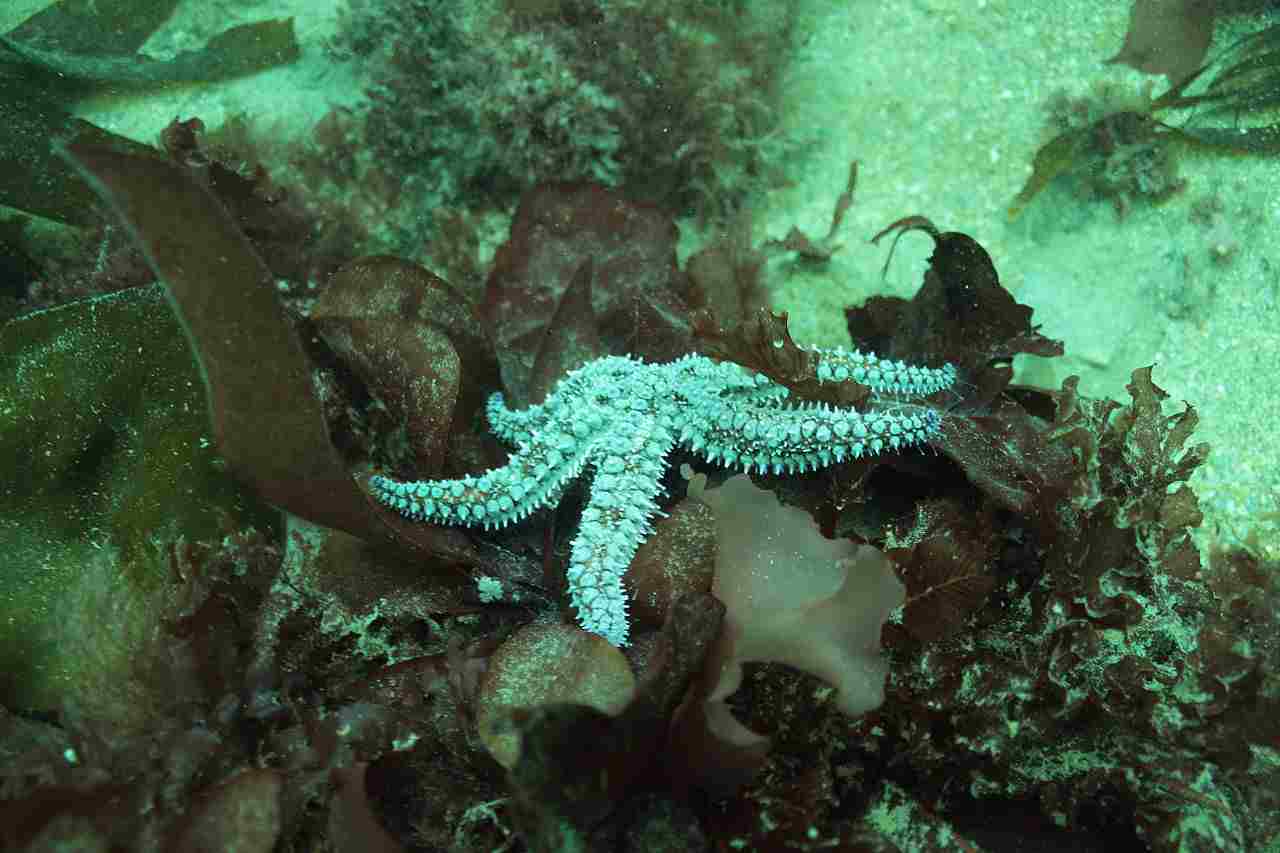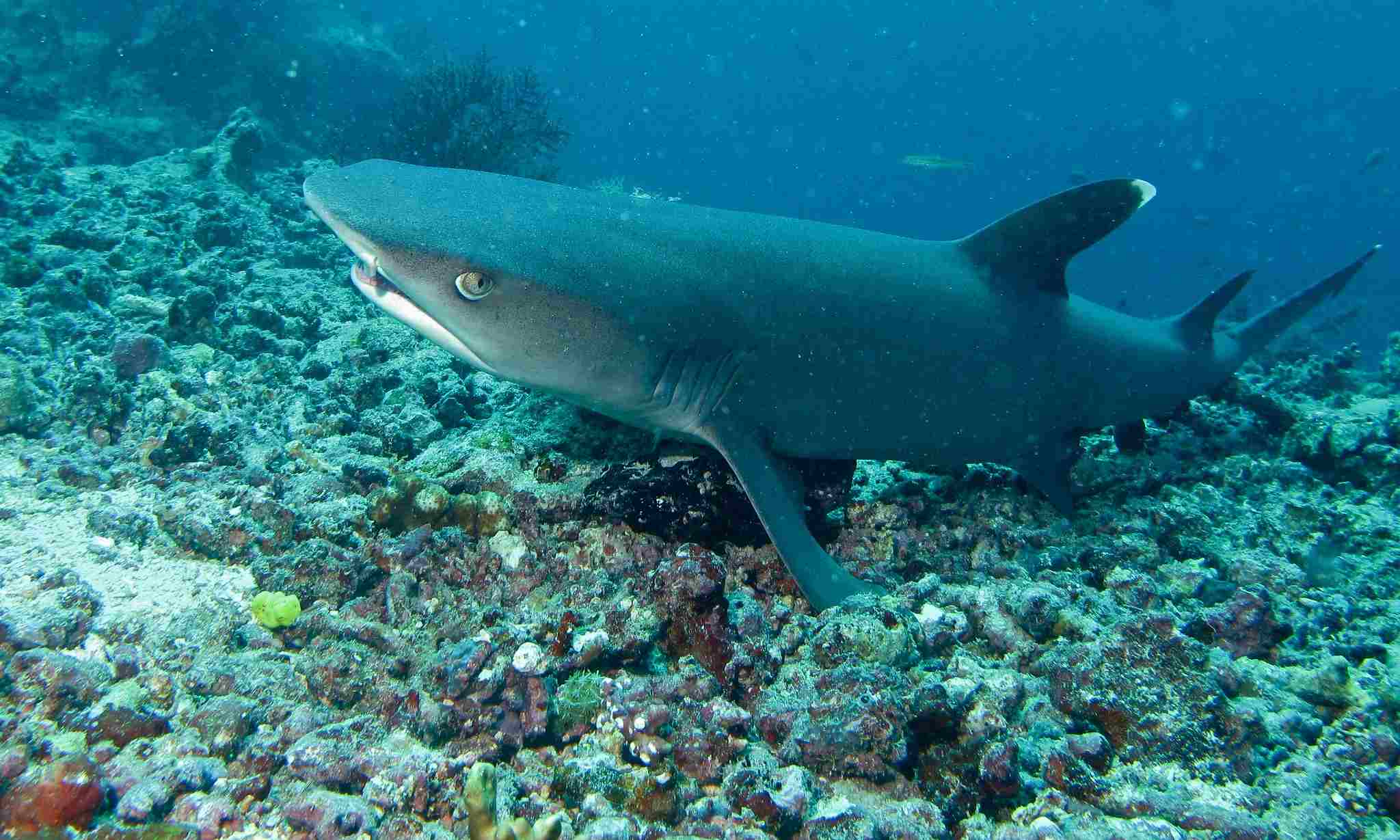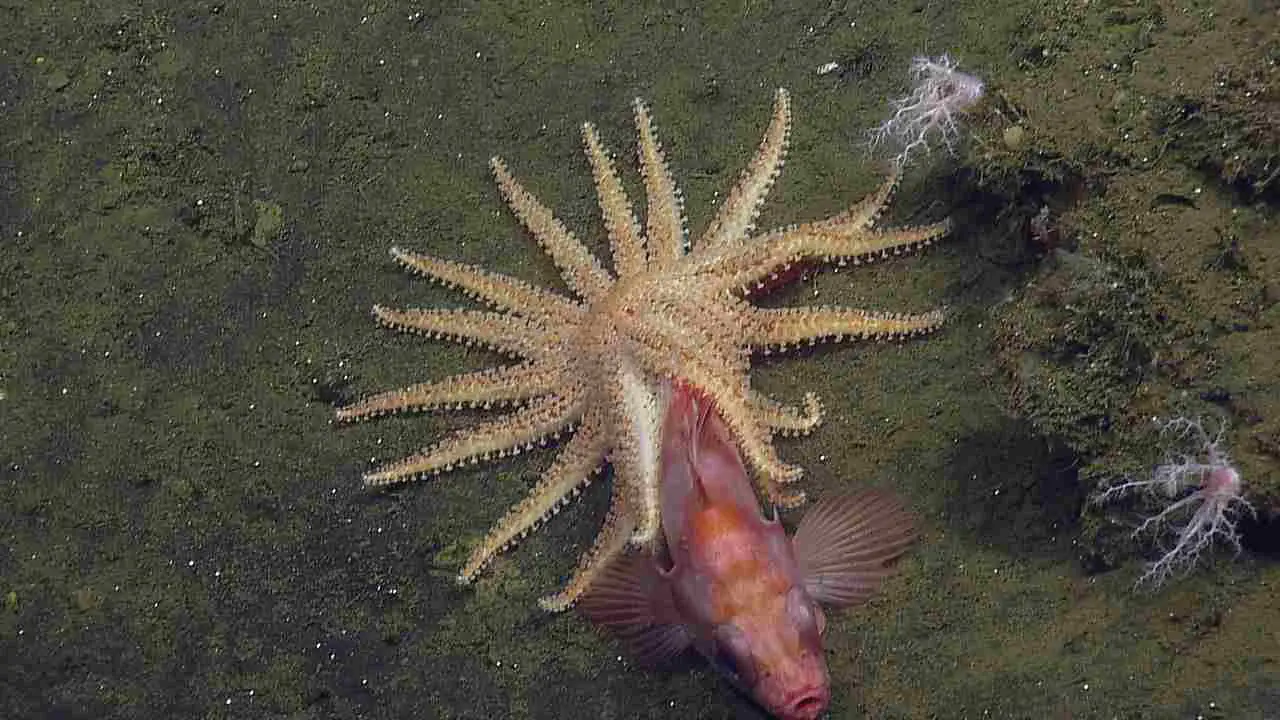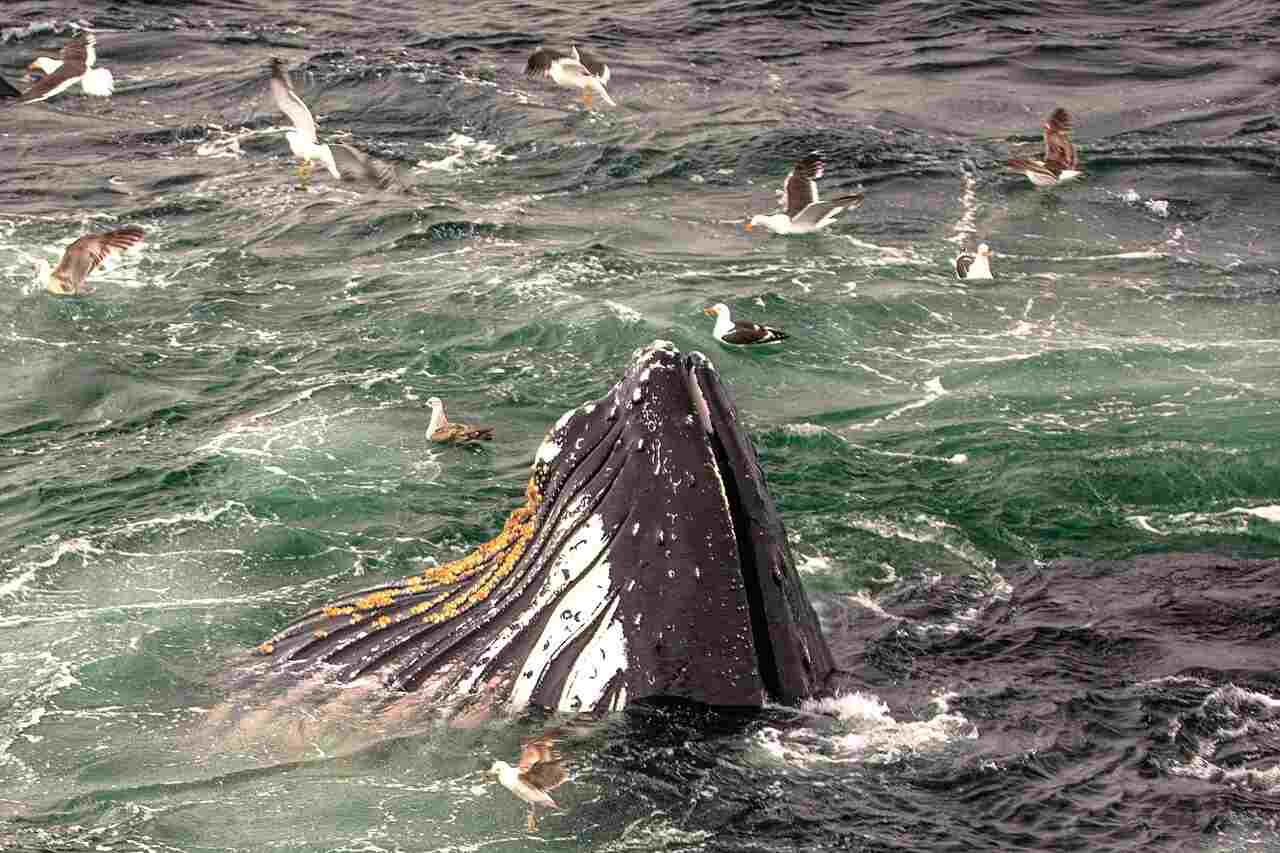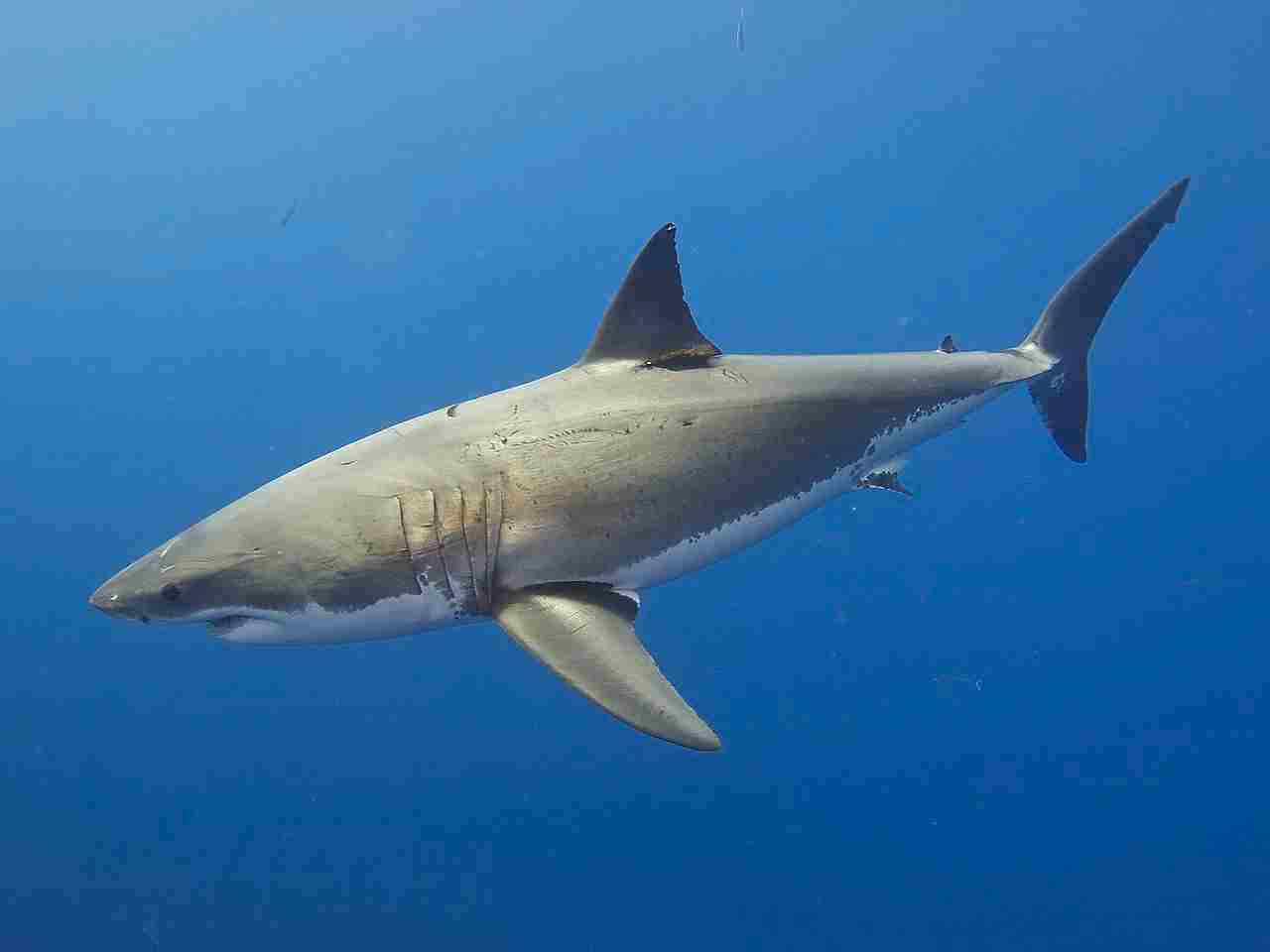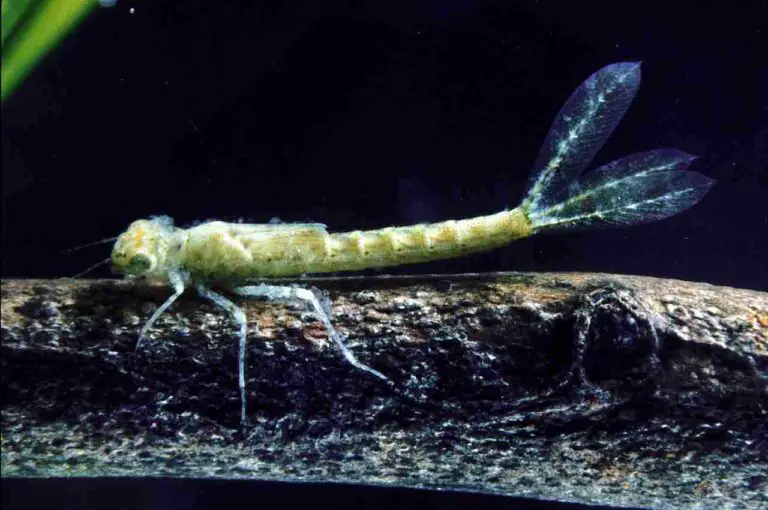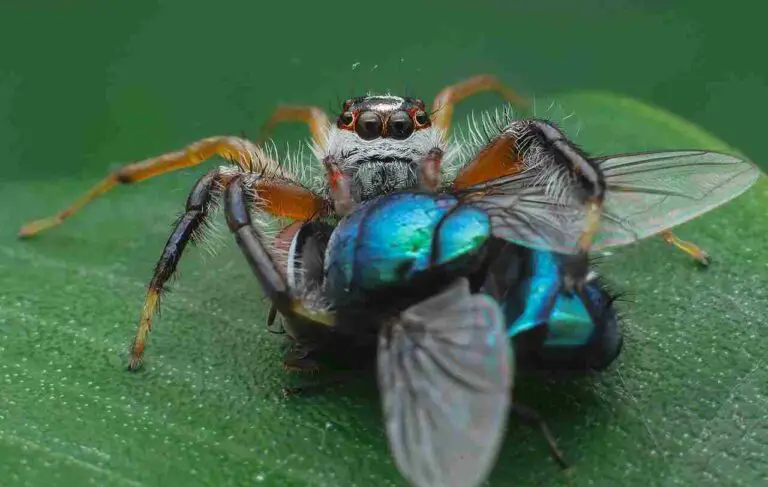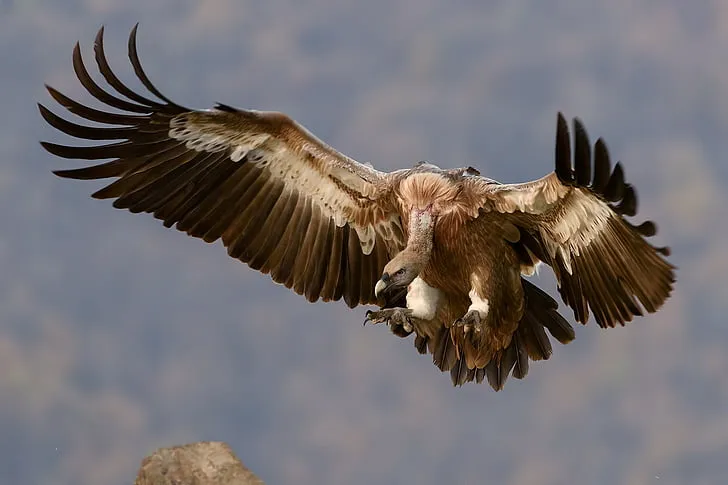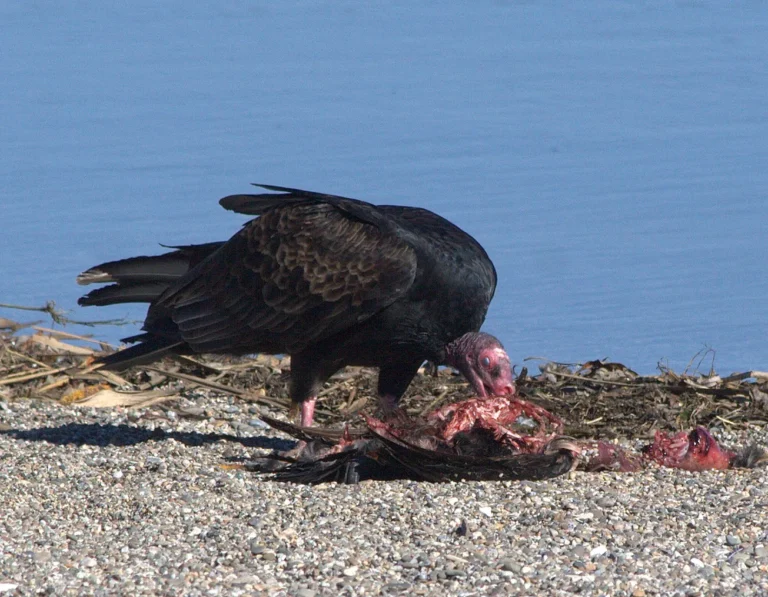What do Dolphins Eat? 21 Prey of Dolphins Discussed
Dolphins eat various marine animals including fish like tuna, salmon, cod, sardine, catfish, shark; cnidarians like jellyfish, mammals like seal and sea lion, invertebrates like starfish, octopus; birds like penguin and albatross; reptiles like sea turtles, crustaceans like lobsters and krill; stingrays, as well as other dolphins.
This article discusses the animals that dolphins eat, in no particular order, as follows;
1). Jellyfish (Do Dolphins Eat Jellyfish?)
Yes, dolphins do eat jellyfish. Jellyfish are one of the main sources of food for dolphins, especially certain species like the bottlenose dolphin. These marine mammals have been observed feeding on jellyfish in various parts of the world.
Jellyfish are a potential prey of dolphins due to their abundance in the ocean. Dolphins have been known to consume different species of jellyfish, including the moon jellyfish and the lion’s mane jellyfish. These gelatinous creatures provide a nutritious meal for dolphins, as they are rich in protein and other essential nutrients.
Dolphins have developed unique feeding strategies to consume jellyfish. They use their sharp teeth to catch and grip the jellyfish, and then swallow them whole. Some dolphins even use their snouts to stun the jellyfish before consuming them. This allows them to avoid the stinging tentacles of the jellyfish, which can be harmful.
Jellyfish are often found in large swarms or blooms, which makes them an easily accessible food source for dolphins. These marine mammals are highly skilled hunters and can locate jellyfish using their echolocation abilities. They emit clicks and listen for the echoes to determine the location and size of the jellyfish.
It is important to note that while dolphins do eat jellyfish, they also need to be cautious. Some species of jellyfish, like the box jellyfish, are venomous and can cause harm to dolphins if ingested. Dolphins have been observed avoiding these toxic jellyfish and focusing on non-venomous species instead.
2). Tuna (Do Dolphins Eat Tuna?)
Tuna is another potential prey of dolphins, and they have been observed feeding on this fish in various parts of the world. Dolphins are known to consume different species of tuna, including yellowfin tuna and skipjack tuna. These fish provide a rich source of nutrients for dolphins, as they are high in protein and omega-3 fatty acids.
Dolphins have developed efficient hunting techniques to catch tuna. They use their speed and agility to chase down the fast-swimming fish. Dolphins are known for their acrobatic leaps and flips, which they use to herd and corral tuna into tight groups. Once the tuna are grouped together, dolphins take turns swimming through the school and feeding on the fish.
One of the fascinating aspects of dolphin hunting behavior is their ability to work together in coordinated groups called pods. These pods can consist of several dolphins, and they collaborate to increase their chances of catching tuna. By working together, dolphins can create a more effective hunting strategy and increase their success rate.
Dolphins also use their echolocation abilities to locate tuna. They emit clicks and listen for the echoes to determine the location and size of the fish. This helps them to pinpoint the exact position of the tuna and plan their approach for a successful hunt.
It is important to note that while dolphins do eat tuna, their diet is not solely dependent on this fish. Dolphins are opportunistic feeders and will consume a variety of prey depending on their availability. They have a diverse diet that includes other fish, squid, shrimp, and even smaller marine mammals.
3). Salmon (Do Dolphins Eat Salmon?)
Salmon is a potential prey of dolphins, and they have been observed feeding on this fish in certain regions. Dolphins are known to consume different species of salmon, including Chinook salmon, Coho salmon, and Atlantic salmon. These fish provide a valuable source of nutrients for dolphins, as they are rich in protein, omega-3 fatty acids, and essential minerals.
Dolphins employ their remarkable hunting skills to catch salmon. They rely on their speed, agility, and intelligence to outmaneuver these swift-swimming fish. Dolphins are capable of reaching impressive speeds, allowing them to chase down salmon with ease. They use their sleek bodies and powerful tails to swiftly navigate through the water, closing in on their prey.
One fascinating aspect of dolphin hunting behavior is their ability to work together in coordinated groups called pods. These pods consist of several dolphins, and they collaborate to increase their chances of catching salmon. By working as a team, dolphins can create a more efficient hunting strategy and improve their success rate.
Dolphins also utilize their exceptional echolocation abilities to locate salmon. They emit clicks and listen for the echoes, which help them determine the precise location and size of the fish. This sensory skill allows dolphins to pinpoint the exact position of the salmon and plan their approach for a successful hunt.
While salmon is a significant part of a dolphin’s diet, it is important to note that dolphins are opportunistic feeders. They have a diverse diet that includes various prey depending on availability. In addition to salmon, dolphins consume other types of fish, such as mackerel and herring. They also feed on squid, shrimp, and even smaller marine mammals when the opportunity arises.
The consumption of salmon by dolphins plays a crucial role in maintaining the balance of marine ecosystems. As predators, dolphins help regulate the population of salmon, preventing overpopulation and ensuring the health of the fish species. This symbiotic relationship between dolphins and salmon highlights the interconnectedness of marine life and the importance of preserving these delicate ecosystems.
4). Cod (Do Dolphins Eat Cod?)
Cod is a potential prey of dolphins, and they have been observed feeding on this fish in certain regions. Dolphins are known to consume different species of cod, including Atlantic cod and Pacific cod. These fish provide a valuable source of nutrients for dolphins, as they are rich in protein, omega-3 fatty acids, and essential minerals.
Dolphins employ their remarkable hunting skills to catch cod. They rely on their speed, agility, and intelligence to outmaneuver these swift-swimming fish. Dolphins are capable of reaching impressive speeds, allowing them to chase down cod with ease. They use their sleek bodies and powerful tails to swiftly navigate through the water, closing in on their prey.
One fascinating aspect of dolphin hunting behavior is their ability to work together in coordinated groups called pods. These pods consist of several dolphins, and they collaborate to increase their chances of catching cod. By working as a team, dolphins can create a more efficient hunting strategy and improve their success rate.
Dolphins also utilize their exceptional echolocation abilities to locate cod. They emit clicks and listen for the echoes, which help them determine the precise location and size of the fish. This sensory skill allows dolphins to pinpoint the exact position of the cod and plan their approach for a successful hunt.
While cod is a significant part of a dolphin’s diet, it is important to note that dolphins are opportunistic feeders. They have a diverse diet that includes various prey depending on availability. In addition to cod, dolphins consume other types of fish, such as salmon and tuna. They also feed on squid, shrimp, and even smaller marine mammals when the opportunity arises.
The consumption of cod by dolphins plays a crucial role in maintaining the balance of marine ecosystems. As predators, dolphins help regulate the population of cod, preventing overpopulation and ensuring the health of the fish species. This symbiotic relationship between dolphins and cod highlights the interconnectedness of marine life and the importance of preserving these delicate ecosystems.
5). Sardines (Do Dolphins Eat Sardines?)
Sardines are indeed a potential prey of dolphins, and they are known to be a significant part of their diet in certain regions. Dolphins are highly skilled hunters and have developed various strategies to catch sardines efficiently. These small, oily fish are rich in nutrients, making them an excellent food source for dolphins.
Dolphins use their speed and agility to chase down sardines. With their sleek bodies and powerful tails, they can swiftly navigate through the water, keeping up with the fast-swimming sardines. Dolphins are known for their impressive swimming speeds, which allow them to outmaneuver their prey and catch them with precision.
One fascinating aspect of dolphin hunting behavior is their ability to work together in coordinated groups called pods. These pods consist of several dolphins, and they collaborate to increase their chances of catching sardines. By working as a team, dolphins can surround a school of sardines and create a barrier, making it difficult for the fish to escape. This cooperative hunting strategy ensures a higher success rate for the dolphins.
Dolphins also rely on their exceptional echolocation abilities to locate sardines. They emit clicks and listen for the echoes, which help them determine the precise location and size of the fish. This sensory skill allows dolphins to pinpoint the exact position of the sardines and plan their approach for a successful hunt.
While sardines are a significant part of a dolphin’s diet, it’s important to note that dolphins are opportunistic feeders. They have a diverse diet that includes various prey depending on availability. In addition to sardines, dolphins consume other types of fish, such as tuna and salmon. They also feed on squid, shrimp, and even smaller marine mammals when the opportunity arises.
The consumption of sardines by dolphins plays a crucial role in maintaining the balance of marine ecosystems. As predators, dolphins help regulate the population of sardines, preventing overpopulation and ensuring the health of the fish species. This symbiotic relationship between dolphins and sardines highlights the interconnectedness of marine life and the importance of preserving these delicate ecosystems.
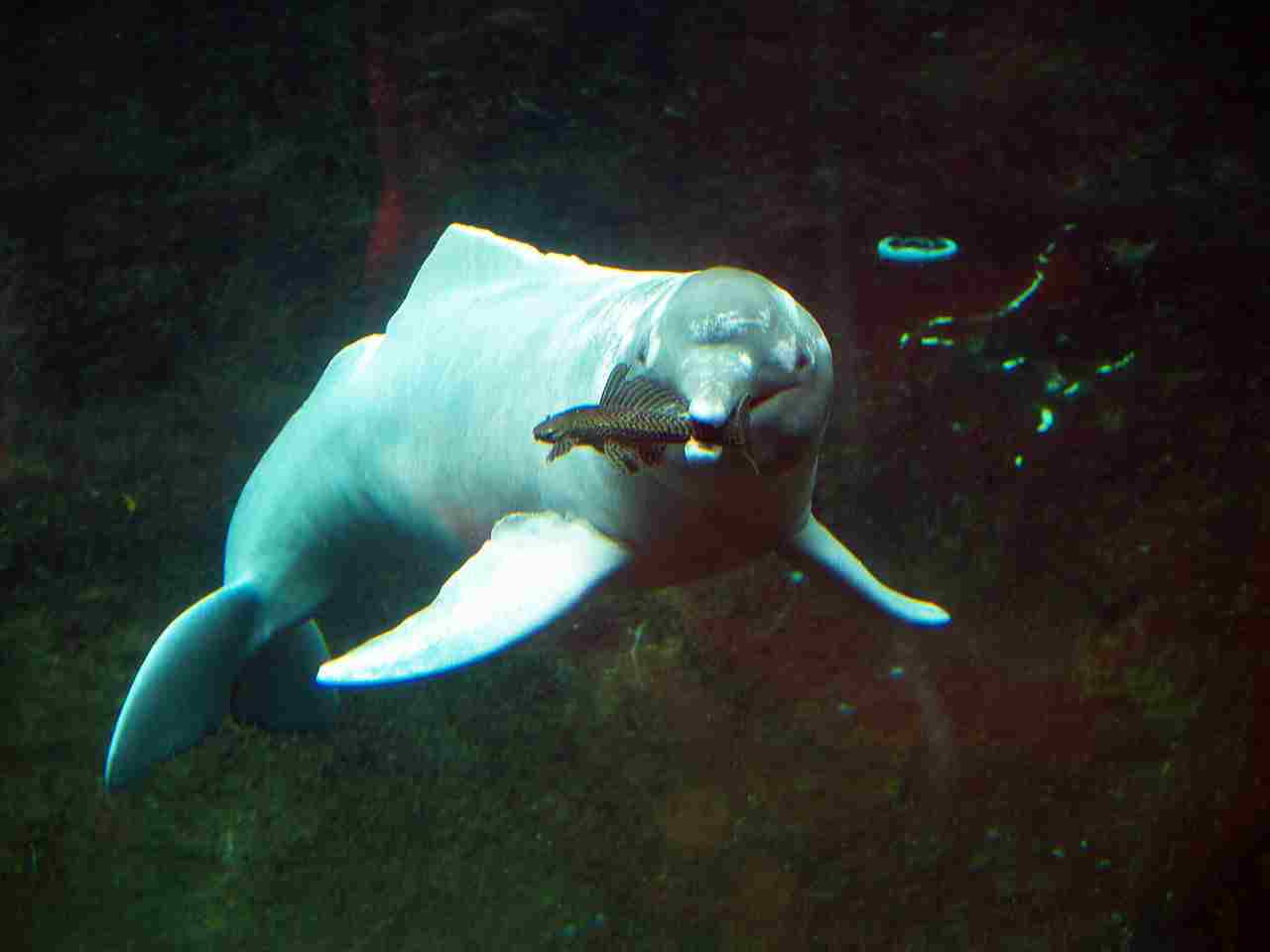
6). Sharks (Do Dolphins Eat Sharks?)
Large species of dolphins, like orcas, may feed on sharks; either as fresh-kill, or as organic remains.
While it is true that large dolphin species like orcas may eat sharks, the same cannot be said for most other dolphin species. Dolphins are generally not known to prey on sharks as a regular part of their diet. Instead, they tend to focus on smaller fish and marine invertebrates.
Dolphins and sharks are both top predators in the ocean, but they have different hunting strategies and dietary preferences. Sharks are known for their powerful jaws and sharp teeth, which they use to capture and consume larger prey, including other fish and marine mammals. On the other hand, dolphins have a more varied diet that consists mainly of smaller fish, such as sardines and tuna, as well as squid and shrimp.
While dolphins and sharks may occasionally interact in the same marine environment, their interactions are often limited to competition for resources rather than predation. Dolphins are highly intelligent and social animals that rely on their agility and speed to catch their prey. They are more likely to avoid sharks or use evasive maneuvers to escape from them rather than actively hunting them.
In fact, there have been instances where dolphins have been observed protecting themselves and other marine animals from shark attacks. Dolphins have been known to form a defensive circle around vulnerable individuals, such as seals or sea lions, to deter sharks from approaching. This behavior showcases the cooperative and protective nature of dolphins towards other species in their ecosystem.
It is important to note that the relationship between dolphins and sharks can vary depending on the specific species and the ecological context. While some dolphin species may occasionally scavenge on shark carcasses or interact with sharks in certain circumstances, it is not a common occurrence or a significant part of their diet.
7). Catfish (Do Dolphins Eat Catfish?)
Catfish are a potential prey of dolphins, although they are not a common part of their diet. Dolphins primarily feed on smaller fish and marine invertebrates, such as sardines, tuna, squid, and shrimp. While catfish may occasionally be targeted by dolphins, it is not a significant source of food for them.
Dolphins have a varied diet that depends on their species and habitat. They are highly intelligent and agile hunters, using their speed and agility to catch their prey. Catfish, with their bottom-dwelling behavior and slow swimming speed, may not be an easy target for dolphins. Dolphins are more likely to focus on faster-moving fish that are easier to catch.
It is important to note that the relationship between dolphins and catfish can vary depending on the specific species and the ecological context. In some cases, dolphins may opportunistically feed on catfish if they are available and easily accessible. However, this is not a common occurrence and does not play a significant role in their overall diet.
8). Seals (Do Dolphins Eat Seals?)
Seals are a potential prey of dolphins, and their presence in the ocean can attract the attention of these marine mammals. Dolphins are known to exhibit opportunistic feeding behavior, and if the opportunity arises, they may target seals as a food source. However, it is important to note that seals are not a common part of the dolphin’s diet.
Dolphins primarily feed on smaller fish and marine invertebrates, such as sardines, tuna, squid, and shrimp. These prey items are more abundant and easier for dolphins to catch due to their size and swimming behavior. Seals, on the other hand, are larger and more agile, making them a more challenging target for dolphins.
The relationship between dolphins and seals can vary depending on the species and the ecological context. In some regions, dolphins and seals may coexist peacefully without any significant predation. However, in other areas where food resources are limited, dolphins may actively pursue seals as a potential food source.
When dolphins do target seals, they often employ their speed and agility to their advantage. Dolphins are highly intelligent hunters and can use strategic hunting techniques to catch their prey. They may work together in groups, known as pods, to corral and isolate a seal before launching a coordinated attack.
It is important to highlight that the predation of seals by dolphins is not a common occurrence and does not play a significant role in the overall diet of dolphins. Dolphins have a diverse range of prey options available to them, and they tend to focus on smaller, more abundant prey items that are easier to catch and consume.
9). Sea Lions (Do Dolphins Eat Sea Lions?)
Sea lions are a potential prey of dolphins, although they are not a common part of the dolphin’s diet. Dolphins primarily feed on smaller fish and marine invertebrates, such as sardines, tuna, squid, and shrimp. These prey items are more abundant and easier for dolphins to catch due to their size and swimming behavior. Sea lions, on the other hand, are larger and more agile, making them a more challenging target for dolphins.
The relationship between dolphins and sea lions can vary depending on the species and the ecological context. In some regions, dolphins and sea lions may coexist peacefully without any significant predation. However, in areas where food resources are limited, dolphins may actively pursue sea lions as a potential food source.
When dolphins do target sea lions, they often employ their speed and agility to their advantage. Dolphins are highly intelligent hunters and can use strategic hunting techniques to catch their prey. They may work together in groups, known as pods, to corral and isolate a sea lion before launching a coordinated attack.
It is important to note that the predation of sea lions by dolphins is not a common occurrence and does not play a significant role in the overall diet of dolphins. Dolphins have a diverse range of prey options available to them, and they tend to focus on smaller, more abundant prey items that are easier to catch and consume.
10). Starfish (Do Dolphins Eat Starfish?)
Starfish, especially those found closer to shore, are a potential prey of dolphins. While dolphins primarily feed on smaller fish and marine invertebrates, they also include starfish in their diet. Dolphins are known to eat starfish alongside other invertebrates such as sardines, tuna, squid, and shrimp.
The inclusion of starfish in the dolphin’s diet is influenced by their availability and abundance in the dolphins’ habitat. Dolphins are opportunistic feeders and will consume a variety of prey items based on what is readily available. In areas where starfish populations are abundant, dolphins may actively seek them out as a food source.
When hunting for starfish, dolphins use their intelligence and hunting skills to their advantage. They may work together in pods to corral and isolate the starfish before launching a coordinated attack. Dolphins are highly agile swimmers and can quickly maneuver to capture their prey.
It is important to note that while starfish are part of the dolphin’s diet, they are not the sole focus of their feeding habits. Dolphins have a diverse range of prey options available to them, and they tend to consume a variety of smaller, more abundant prey items. This ensures that they obtain a balanced diet and meet their nutritional needs.
The predation of starfish by dolphins plays a role in the ecological balance of marine ecosystems. By consuming starfish, dolphins help to control their population and prevent overgrowth. This, in turn, contributes to the overall health and stability of the ecosystem.
11). Octopuses (Do Dolphins Eat Octopuses?)
Octopuses are indeed a potential prey of dolphins, adding to the variety of their diet. Dolphins are known for their diverse feeding habits, which include consuming smaller fish, marine invertebrates, and even cephalopods like octopuses. These intelligent marine mammals have been observed hunting and consuming octopuses alongside other prey items such as sardines, tuna, squid, and shrimp.
The inclusion of octopuses in the dolphin’s diet is influenced by their availability and abundance in the dolphins’ habitat. Dolphins are opportunistic feeders and will take advantage of any food source that is readily available. In areas where octopuses are plentiful, dolphins may actively seek them out as a food source.
When hunting for octopuses, dolphins utilize their intelligence and hunting skills to their advantage. They may work together in pods to corral and isolate the octopuses before launching a coordinated attack. Dolphins’ agility and swimming abilities allow them to quickly maneuver and capture their prey.
It is important to note that while octopuses are part of the dolphin’s diet, they are not the sole focus of their feeding habits. Dolphins have a wide range of prey options available to them, and they tend to consume a variety of smaller, more abundant prey items. This ensures that they obtain a balanced diet and meet their nutritional needs.
The predation of octopuses by dolphins plays a role in maintaining the ecological balance of marine ecosystems. By consuming octopuses, dolphins help control their population and prevent overgrowth. This contributes to the overall health and stability of the ecosystem, highlighting the important role dolphins play as apex predators in the marine food chain.
12). Birds (Do Dolphins Eat Birds?)
Birds are indeed a potential prey of dolphins, adding to the diversity of their diet. Dolphins are known for their versatile feeding habits, which include consuming various marine creatures, such as smaller fish, marine invertebrates, and even birds. Dolphins have been observed hunting and consuming birds alongside other prey items like sardines, tuna, squid, and shrimp.
The inclusion of birds in the dolphin’s diet is influenced by their availability and abundance in the dolphins’ habitat. Dolphins are opportunistic feeders and will take advantage of any food source that is readily available. In coastal areas or near estuaries where birds gather in large numbers, dolphins may actively target them as a food source.
When hunting for birds, dolphins utilize their agility and speed to their advantage. They may work together in pods to corral and isolate the birds before launching a coordinated attack. Dolphins’ remarkable swimming abilities allow them to swiftly maneuver and capture their prey.
It is important to note that while birds are part of the dolphin’s diet, they are not the sole focus of their feeding habits. Dolphins have a wide range of prey options available to them, and they tend to consume a variety of smaller, more abundant prey items. This ensures that they obtain a balanced diet and meet their nutritional needs.
13). Shrimp (Do Dolphins Eat Shrimp?)
Shrimp are indeed a potential prey of dolphins, adding to the variety of their diet. Dolphins are known for their versatile feeding habits, which include consuming various marine creatures, such as smaller fish, marine invertebrates, and shrimp. Dolphins have been observed hunting and consuming shrimp alongside other prey items like sardines, tuna, and squid.
Shrimp are a valuable food source for dolphins due to their abundance in coastal and estuarine areas. These small crustaceans provide a rich source of nutrients and energy for dolphins. Dolphins use their agility and speed to their advantage when hunting for shrimp. They may work together in pods to corral and isolate the shrimp before launching a coordinated attack. Dolphins’ remarkable swimming abilities allow them to swiftly maneuver and capture their prey.
It is important to note that while shrimp are part of the dolphin’s diet, they are not the sole focus of their feeding habits. Dolphins have a wide range of prey options available to them, and they tend to consume a variety of smaller, more abundant prey items. This ensures that they obtain a balanced diet and meet their nutritional needs.
14). Squid (Do Dolphins Eat Squid?)
Squid are a potential prey of dolphins, adding to the diversity of their diet. Dolphins are known for their versatile feeding habits, which include consuming various marine creatures, such as smaller fish, marine invertebrates, and squid. Dolphins have been observed hunting and consuming squid alongside other prey items like shrimp, sardines, and tuna.
Squid are a valuable food source for dolphins due to their high nutritional value. These cephalopods are rich in protein and contain essential fatty acids, making them an important part of a dolphin’s balanced diet. Dolphins use their intelligence and agility to their advantage when hunting for squid. They have been observed employing different hunting techniques, such as cooperative hunting and individual pursuit, to capture these elusive creatures.
One common hunting strategy used by dolphins is called “herding.” In this technique, dolphins work together in a coordinated manner to corral a group of squid into a tight ball. By swimming in circles around the squid, they create a barrier that prevents the squid from escaping. Once the squid are confined, the dolphins take turns darting into the ball to capture their prey. This cooperative hunting behavior allows dolphins to maximize their chances of success in capturing squid.
Dolphins’ ability to echolocate also plays a crucial role in their squid hunting success. Echolocation is a biological sonar system that dolphins use to navigate and locate prey in their environment. By emitting clicks and listening to the echoes that bounce back, dolphins can accurately detect the presence and location of squid, even in dark or murky waters. This sensory adaptation gives dolphins a significant advantage when hunting for squid.
It is important to note that while squid are part of the dolphin’s diet, they are not the sole focus of their feeding habits. Dolphins have a wide range of prey options available to them, and they tend to consume a variety of smaller, more abundant prey items. This ensures that they obtain a balanced diet and meet their nutritional needs.
15). Sea Turtles (Do Dolphins Eat Sea Turtles?)
Sea turtles are a potential prey of dolphins, adding to the variety of their diet. Dolphins are known for their versatile feeding habits, which include consuming various marine creatures, such as smaller fish, marine invertebrates, and sea turtles. While sea turtles may not be the primary focus of a dolphin’s diet, they are occasionally targeted as a food source.
Sea turtles are a valuable food source for dolphins due to their size and nutritional value. These reptiles can provide a substantial meal for dolphins, especially larger species such as the leatherback turtle. Dolphins have been observed hunting and consuming sea turtles alongside other prey items like fish and squid.
When hunting sea turtles, dolphins often use their intelligence and agility to their advantage. They employ different hunting techniques, such as cooperative hunting and individual pursuit, to capture these elusive creatures. One common hunting strategy used by dolphins is called “corraling.” In this technique, dolphins work together to surround a sea turtle, preventing it from escaping. By swimming in a coordinated manner, they create a barrier that keeps the sea turtle within reach. Once the sea turtle is confined, the dolphins take turns darting in to capture their prey.
Dolphins’ ability to echolocate also plays a crucial role in their sea turtle hunting success. Echolocation is a biological sonar system that dolphins use to navigate and locate prey in their environment. By emitting clicks and listening to the echoes that bounce back, dolphins can accurately detect the presence and location of sea turtles, even in dark or murky waters. This sensory adaptation gives dolphins a significant advantage when hunting for sea turtles.
It is important to note that sea turtles are not the primary food source for dolphins. Dolphins have a wide range of prey options available to them, and they tend to consume a variety of smaller, more abundant prey items. Sea turtles are likely targeted by dolphins opportunistically, rather than being a staple in their diet. This ensures that dolphins obtain a balanced diet and meet their nutritional needs.
16). Penguins (Do Dolphins Eat Penguins?)
Penguins are a potential prey of dolphins, adding to the diversity of their diet. While dolphins are primarily known for their consumption of fish and marine invertebrates, they have been observed hunting and consuming penguins on occasion.
Dolphins are highly skilled hunters and have been known to target penguins as a food source. Penguins are flightless birds that spend a significant amount of time in the water, making them vulnerable to predation by marine animals like dolphins. Dolphins are attracted to penguins due to their abundance in certain regions and their high nutritional value.
When hunting penguins, dolphins utilize their speed, agility, and intelligence to their advantage. They employ various hunting techniques to capture these aquatic birds. One common strategy is to chase the penguins from below, using their speed to create a vortex that disorients the birds and makes it easier for the dolphins to catch them. Dolphins are also known to work together in groups to corral and isolate penguins, making it difficult for them to escape.
Dolphins’ ability to echolocate plays a crucial role in their success in hunting penguins. Echolocation allows dolphins to emit clicks and listen to the echoes that bounce back, enabling them to accurately locate and track their prey. This sensory adaptation gives dolphins a significant advantage when hunting for penguins, especially in dark or murky waters.
It is important to note that penguins are not a staple in the diet of dolphins. Dolphins have a wide range of prey options available to them, and they primarily consume fish and smaller marine invertebrates. Penguins are likely targeted by dolphins opportunistically, depending on their availability and the specific ecological conditions of their habitat.
17). Stingrays (Do Dolphins Eat Stingrays?)
Stingrays are a potential prey of dolphins, adding to the variety of their diet. Dolphins are known to consume a wide range of marine species, and stingrays are one of them. These flat-bodied creatures with their whip-like tails are found in coastal waters and are often encountered by dolphins during their foraging activities.
Dolphins have been observed hunting and consuming stingrays, showcasing their adaptability as predators. When targeting stingrays, dolphins utilize their speed and agility to their advantage. They employ various hunting techniques, such as chasing the stingrays from below and using their speed to create a vortex that disorients the prey. This makes it easier for the dolphins to catch the stingrays.
Stingrays have a unique defense mechanism in the form of their venomous barb located on their tails. However, dolphins have developed strategies to minimize the risk of injury. They often target the stingrays from behind, avoiding the barb and reducing the chances of getting stung.
Dolphins’ echolocation abilities also play a crucial role in their success in hunting stingrays. Echolocation allows dolphins to emit clicks and listen to the echoes that bounce back, enabling them to accurately locate and track their prey. This sensory adaptation gives dolphins an advantage when hunting for stingrays, especially in murky or dark waters.
It is important to note that while dolphins do consume stingrays, they are not their primary prey. Dolphins have a diverse diet that includes fish, marine invertebrates, and other small marine animals. The consumption of stingrays by dolphins is opportunistic, depending on their availability and the specific ecological conditions of their habitat.
18). Lobsters (Do Dolphins Eat Lobsters?)
Lobsters are a potential prey of dolphins, adding to the diversity of their diet. Dolphins are known for their ability to consume a wide range of marine species, and lobsters are no exception. These crustaceans with their hard exoskeletons and large claws are often encountered by dolphins in their coastal habitats.
Dolphins have been observed hunting and consuming lobsters, showcasing their adaptability as skilled predators. When targeting lobsters, dolphins utilize their intelligence and agility to their advantage. They employ various hunting techniques, such as circling the lobster and using their speed to create turbulence that disorients the prey. This makes it easier for the dolphins to catch the lobsters.
Lobsters have a formidable defense mechanism in the form of their strong claws, which they use to protect themselves. However, dolphins have developed strategies to minimize the risk of injury. They often target the lobster’s softer underbelly, avoiding the claws and reducing the chances of getting injured.
Dolphins’ echolocation abilities also play a crucial role in their success in hunting lobsters. Echolocation allows dolphins to emit clicks and listen to the echoes that bounce back, enabling them to accurately locate and track their prey. This sensory adaptation gives dolphins an advantage when hunting for lobsters, especially in areas with complex underwater structures where lobsters often hide.
It is important to note that while dolphins do consume lobsters, they are not their primary prey. Dolphins have a diverse diet that includes fish, marine invertebrates, and other small marine animals. The consumption of lobsters by dolphins is opportunistic, depending on their availability and the specific ecological conditions of their habitat.
19). Krill (Do Dolphins Eat Krill?)
Krill, including spinner dolphin, is a potential prey of dolphins. These small, shrimp-like crustaceans are an important food source for many marine animals, and dolphins are no exception. While dolphins primarily feed on fish and other marine invertebrates, they also consume krill when it is available in their habitat.
Dolphins have been observed feeding on krill in areas where these tiny organisms are abundant. They use their keen senses, such as sight and echolocation, to locate and track krill swarms. Dolphins are known for their agility and speed, which they utilize to their advantage when hunting krill. They swim through the swarms, opening their mouths wide to capture as many krill as possible in a single gulp.
Krill is a nutritious food source for dolphins, providing them with essential nutrients and energy. These small crustaceans are rich in proteins, fats, and carbohydrates, which are vital for the dolphins’ overall health and survival. The consumption of krill also helps dolphins maintain their energy levels, especially during periods of high activity, such as hunting or migration.
It is important to note that the availability of krill can vary depending on the location and season. Krill populations tend to fluctuate, influenced by factors such as ocean currents, temperature, and the presence of other predators. Therefore, the consumption of krill by dolphins may be opportunistic and dependent on the specific ecological conditions of their habitat.
20). Other Dolphins (Do Dolphins Eat Other Dolphins?)
While it may seem surprising, dolphins do occasionally eat other dolphins, although it is not a common occurrence. This phenomenon is more likely to happen when larger dolphin species, such as orcas, come into contact with smaller species like spinner or bottlenose dolphins. However, it is important to note that this behavior is not typical and is influenced by specific conditions.
The consumption of other dolphins by dolphins themselves is considered a rare event. It may occur under certain circumstances, such as when there is a scarcity of their usual prey or when there is intense competition for resources. In these situations, dolphins may resort to cannibalism as a means of survival. However, it is important to emphasize that this behavior is not the norm and is not observed frequently in dolphin populations.
Dolphins are highly intelligent and social animals, known for their complex social structures and cooperative behaviors. They typically form strong bonds within their own species and engage in cooperative hunting and communication. Therefore, the consumption of other dolphins is not a common behavior and is not part of their regular diet.
It is crucial to understand that dolphins primarily feed on a variety of fish species and other marine invertebrates. Their diet consists of prey that is readily available in their habitat, such as tuna, salmon, sardines, and squid. These are the main food sources for dolphins, and they have evolved to specialize in hunting and consuming these types of prey.
21). Seagulls (Do Dolphins Eat Seagulls?)
Seagulls are not a typical prey for dolphins, but there have been rare instances where dolphins, particularly orcas, have been observed eating seagulls. This behavior is more likely to occur when dolphins are in close proximity to coastal areas where seagulls are abundant. However, it is important to note that this is not a common occurrence and is influenced by specific circumstances.
The consumption of seagulls by dolphins is considered an opportunistic behavior. Dolphins are highly intelligent and adaptable predators, and they are known to take advantage of available food sources when their usual prey is scarce. Seagulls, being coastal birds, are sometimes found near the surface of the water, making them vulnerable to predation by dolphins.
It is important to understand that seagulls are not a significant part of a dolphin’s diet. Dolphins primarily feed on fish species and other marine invertebrates that are more abundant and provide a higher nutritional value. Their diet consists of prey that is readily available in their habitat, such as tuna, salmon, sardines, and squid. These are the main food sources for dolphins, and they have evolved to specialize in hunting and consuming these types of prey.
Dolphins are highly skilled hunters and have developed various hunting techniques to catch their preferred prey. They use their echolocation abilities to locate and track fish, and they often work together in coordinated groups to corral and capture their prey. This cooperative hunting behavior is essential for their survival and ensures that they can efficiently obtain the necessary nutrients from their primary food sources.
Do Dolphins Eat Humans?
No, dolphins do not typically eat humans. Rather, dolphins are known for their friendly and playful nature towards humans. Many dolphin species have been observed to be friendly or shy and avoidant when it comes to interactions with humans. While there have been rare instances of dolphins displaying aggressive behavior towards humans, these cases are extremely uncommon and usually occur when dolphins feel threatened or provoked.
It is important to note that dolphins are highly intelligent creatures and have the ability to recognize and distinguish humans from their usual prey. Dolphins primarily feed on fish species and other marine invertebrates, and humans are not a natural part of their diet. They have evolved to specialize in hunting and consuming the prey that is readily available in their habitat, such as tuna, salmon, sardines, and squid.
Dolphins have a complex social structure and are known to live in tight-knit groups called pods. These pods provide protection and support for each other, and they rely on cooperation and communication to survive. Dolphins are more likely to exhibit curiosity and interest towards humans, rather than viewing them as potential prey.
While dolphins may approach humans out of curiosity or playfulness, it is important to remember that they are still wild animals and should be treated with respect and caution. It is recommended to maintain a safe distance and avoid any actions that may disturb or provoke them. Interactions with dolphins should always be conducted in a responsible and ethical manner, following guidelines and regulations set by marine mammal protection organizations.
How Many Fish do Dolphins Eat a Day?
Using average estimates, dolphins will eat about 6 fish a day.
Dolphins are known to consume a significant amount of fish each day. On average, dolphins eat approximately 5 percent of their own body weight in fish. To put this into perspective, let’s assume that the average weight of a dolphin is around 500 pounds. This means that they consume at least 25 pounds of fish daily.
In terms of the number of fish, it can vary depending on the size of the fish. On average, a small marine fish weighs around 4 pounds. Based on this average weight, dolphins would consume approximately 6.3 fish per day to meet their dietary needs.
It’s important to note that several factors can influence the exact number of fish dolphins consume. These factors include the species of dolphin, their age, activity level, and the availability of prey in their habitat. Some dolphin species, such as the orca or killer whale, are known to consume larger fish and marine mammals, which may result in a lower number of fish consumed per day compared to smaller fish-eating dolphin species.
Additionally, dolphins are opportunistic hunters and will adjust their feeding behavior based on the availability of prey. If there is an abundance of fish in their environment, they may consume more fish in a day. Conversely, if fish populations are scarce, dolphins may need to travel longer distances or hunt for longer periods to meet their daily nutritional requirements.
It’s also worth mentioning that dolphins have a diverse diet and are not solely reliant on fish. They also consume other marine organisms such as squid, shrimp, and crustaceans. The exact composition of their diet can vary depending on their habitat and the availability of different prey species.
Conclusion
* In this article, we have explored the various prey that dolphins consume in their diet.
* We have discussed their consumption of jellyfish, tuna, salmon, cod, sardines, sharks, catfish, seals, sea lions, starfish, octopuses, birds, shrimp, squid, sea turtles, penguins, stingrays, lobsters, krill, other dolphins, and seagulls.
* Dolphins are opportunistic hunters and adjust their feeding behavior based on the availability of prey in their habitat.
* They consume a significant amount of fish each day, with an average of 6 fish per day.
* However, their diet is not limited to fish alone, as they also consume other marine organisms such as squid, shrimp, and crustaceans.
* The exact composition of their diet can vary depending on their habitat and the availability of different prey species.
* In general, dolphins have a diverse diet and play a crucial role in maintaining the balance of marine ecosystems.
FAQs
1). What do Spinner Dolphins Eat?
Spinner dolphins have a diverse diet that primarily consists of small fish and squid. They are known to feed on a variety of fish species, including anchovies, herring, and mackerel. Additionally, spinner dolphins also consume a significant amount of squid, which is an important food source for them.
These intelligent creatures use their echolocation abilities to locate and catch their prey, often hunting in groups to increase their chances of success. Spinner dolphins are opportunistic feeders and will take advantage of any available food sources in their habitat. This includes feeding on crustaceans, such as shrimp and krill, as well as small pelagic organisms like zooplankton.
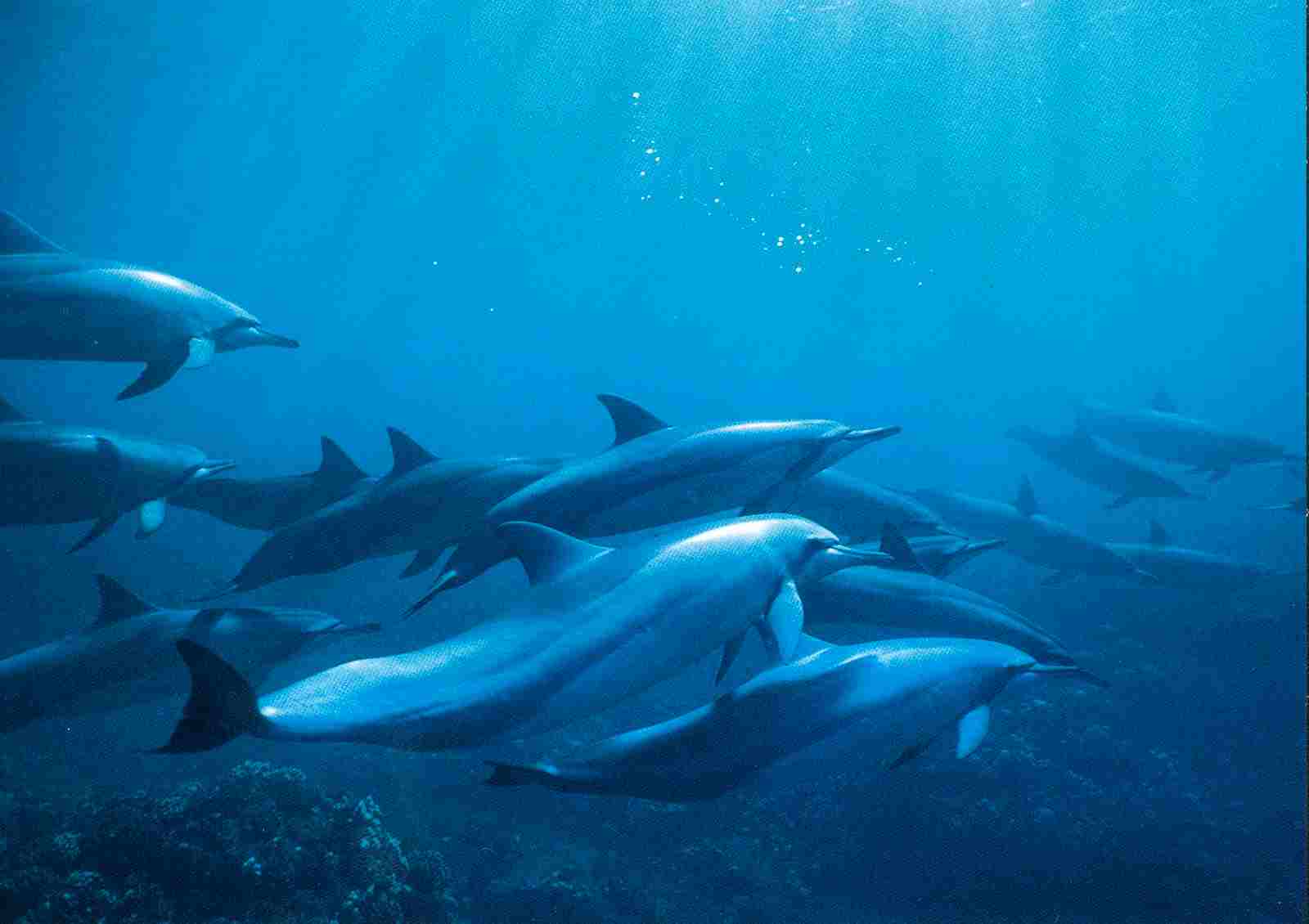
2). Do Dolphins Eat Fish?
Yes, dolphins do eat fish. Fish are a common prey for dolphins, and they make up a significant portion of their diet. Dolphins have a diverse range of fish species that they feed on, including anchovies, herring, and mackerel. These marine mammals are skilled hunters and use their echolocation abilities to locate and catch fish. They often hunt in groups, known as pods, to increase their chances of success.
Dolphins are opportunistic feeders and will take advantage of any available fish in their habitat. They have adapted to different environments and have specific feeding strategies depending on the fish species they are targeting. Some dolphins, like the spinner dolphins mentioned earlier, primarily feed on small fish and squid. Others may target larger fish, such as tuna or salmon.
3). What Fish do Dolphins Eat?
Dolphins have a diverse diet that includes various kinds or species of fish. They are skilled hunters and have adapted to target different fish depending on their habitat and availability. Some common fish species that dolphins eat include anchovies, herring, and mackerel. These fish provide a rich source of nutrients and energy for dolphins.
Anchovies are small, oily fish that are abundant in many coastal areas. They are a favorite prey for dolphins due to their high nutritional value. Herring, another common prey for dolphins, are also oily fish that provide a good source of energy. Mackerel, with their streamlined bodies and fast swimming abilities, are another popular choice for dolphins.
Dolphins use their echolocation abilities to locate and catch fish. They often hunt in groups, known as pods, to increase their chances of success. By working together, dolphins are able to corral and capture schools of fish more effectively.
4). Do Dolphins Eat Crustaceans?
Yes, dolphins do eat crustaceans as part of their diet. Crustaceans are a group of arthropods that include animals like crabs, lobsters, and shrimp. These marine creatures are an important food source for dolphins, providing them with essential nutrients and energy.
Crabs are one type of crustacean that dolphins consume. They have a hard exoskeleton and are found in various coastal areas. Dolphins use their sharp teeth to crack open the shells and extract the meat inside. Lobsters, another type of crustacean, are also on the menu for dolphins. These large, spiny creatures are often found in rocky areas and provide a substantial meal for dolphins.
Shrimp, with their small size and abundance, are a common prey for dolphins. These crustaceans are rich in protein and are easily caught by dolphins due to their slow swimming speed. Dolphins use their agility and speed to snatch shrimp from the water.
5). Do Dolphins Eat Zooplankton?
Yes, dolphins do eat zooplankton as part of their diet. Zooplankton refers to a diverse group of small organisms that drift in the ocean currents. These tiny creatures include small crustaceans, larval fish, and jellyfish. Dolphins are known to consume zooplankton when it is abundant in their feeding grounds.
Krill, a type of zooplankton, is a common prey for dolphins. These small, shrimp-like crustaceans are rich in nutrients and provide a valuable food source for dolphins. Dolphins use their speed and agility to capture krill, often swimming in groups to corral and feed on large swarms of these tiny organisms.
In addition to krill, dolphins may also consume other types of zooplankton such as copepods and amphipods. These small organisms are an important part of the marine food chain and serve as a primary food source for many marine animals, including dolphins.
Dolphins have specialized feeding techniques to capture zooplankton. They use their sharp teeth and strong jaws to filter out the tiny organisms from the water. Dolphins may also use echolocation to locate and target dense patches of zooplankton, making their feeding more efficient.
6). What Plants do Dolphins Eat?
Dolphins are primarily carnivorous and their diet mainly consists of fish and other marine animals. However, they do not typically consume plants as a significant part of their diet. Dolphins are adapted to hunting and consuming prey that is high in protein and fat, which is not typically found in plants.
While dolphins may accidentally ingest small amounts of seaweed or other plant matter while feeding on fish, it is not a deliberate part of their diet. Their digestive system is not designed to efficiently process plant material, and they lack the specialized teeth and digestive enzymes necessary for breaking down plant matter.
7). How Much do Dolphins Eat a Day?
Dolphins have a voracious appetite, consuming a significant amount of food each day. On average, dolphins eat about 5 percent of their own total weight in food. This means that a 500-pound dolphin would consume approximately 25 pounds of food daily. The amount of food dolphins eat can vary depending on factors such as their size, age, and activity level.
Dolphins primarily feed on fish and other marine animals, such as squid and shrimp. They are skilled hunters and use their echolocation abilities to locate and capture their prey. Dolphins have a diverse diet, which helps to ensure they receive the necessary nutrients for their survival.
8). What do Baby Dolphins Eat?
Baby dolphins have unique dietary needs that differ from adult dolphins. So, what do baby dolphins eat? Baby dolphins, also known as calves, primarily rely on their mother’s milk for nourishment during their early stages of life. The milk produced by dolphin mothers is rich in fat and nutrients, providing the essential sustenance needed for the calf’s growth and development.
In addition to milk, baby dolphins gradually start to consume solid food as they grow older. They begin by eating small fish, such as herring and anchovies, which are easier for their small mouths to handle. As they continue to mature, their diet expands to include a wider variety of fish species, squid, and shrimp.
The transition from milk to solid food is a critical milestone for baby dolphins. It is during this period that they learn how to hunt and catch their prey effectively. Mother dolphins play a crucial role in teaching their calves these essential skills, guiding them through the process of locating and capturing food.
The diet of baby dolphins is carefully balanced to provide them with the necessary nutrients for their rapid growth and development. As they become more independent, they gradually shift towards a diet similar to that of adult dolphins. This transition prepares them for a life of successful hunting and survival in the ocean.
9). Do Dolphins Eat Seaweeds?
No, dolphins do not eat seaweeds.
Dolphins are primarily carnivorous creatures and their diet mainly consists of fish, squid, and shrimp. Therefore, it is unlikely that dolphins eat seaweeds. Seaweeds are a type of marine algae and do not provide the necessary nutrients and energy that dolphins require for their survival.
Dolphins have evolved to be efficient hunters, relying on their sharp teeth and streamlined bodies to catch and consume their prey. While dolphins may accidentally ingest small amounts of seaweed while hunting for fish, it is not a significant part of their diet. Their digestive systems are not adapted to process plant matter, and they are better equipped to extract nutrients from animal-based food sources.
10). Are Dolphins Aggressive Towards Humans?
Contrary to popular belief, dolphins are generally not aggressive towards humans. While there have been rare instances of dolphins displaying aggressive behavior towards humans, such incidents are extremely uncommon. Dolphins are known for their friendly and playful nature, often approaching and interacting with humans in a gentle manner. They are highly intelligent creatures and have been observed to show curiosity and interest in human activities.
It is important to note that dolphins are wild animals and should be treated with respect and caution. Interactions with dolphins should always be conducted in a responsible and non-intrusive manner, ensuring the safety and well-being of both humans and dolphins. It is also crucial to remember that dolphins are protected species in many areas, and it is illegal to harass or harm them.
11). Do Dolphins Like to Be Around Humans?
Dolphins have shown a natural affinity for being around humans. They are known to approach humans in a friendly and curious manner, often seeking interaction and playfulness. Dolphins are highly intelligent creatures, and their interest in human activities is evident in their behavior.
Many people have had the incredible experience of swimming or diving with dolphins, where these majestic creatures willingly approach and interact with humans. Dolphins seem to enjoy the company of humans and are often seen leaping and riding the bow waves created by boats.
